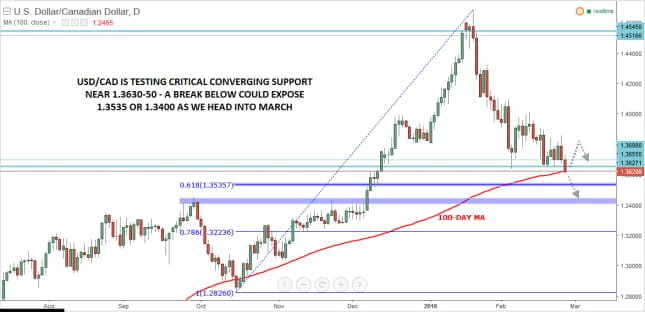In a relatively quiet week for US economic data, the few economic reports that are scheduled for release are all backloaded toward the end of the week. This morning, US traders got their first looks at the Durable Goods Orders and Initial Jobless Claims reports.
"Durable goods" are products that are expected to last at least three years, including things like automobiles, airplanes, appliances, and computers. Because of their generally high costs and long lives, buyers often finance these purchases, so Durable Goods Orders can be viewed as another reading on consumers’ confidence in the future. Based on the just-released January Durable Goods Orders report, consumes were feeling very confident indeed. On a headline basis, Durable Goods Orders rose 4.9% month-over-month vs. an expected reading of 3.0%, while the "Core" reading, which filters out more volatile transportation purchases, rose by a solid 1.8% m/m, beating the 0.2% growth rate expected by traders and economists. This represents the strongest growth in the core reading since June 2014.
Combined with the as-expected-but-still-historically-low Initial Jobless Claims reading of 272k, it’s clear that US economic data remains relatively strong. Traders will look to see whether that positive momentum carries over into tomorrow’s "preliminary" Q4 US GDP and the simultaneous release of the January Core PCE Price Index (the Fed’s preferred inflation measure).
Speaking of the Fed, the world’s most powerful central bank remains laser-focused on the recent global market turmoil more than the solid underlying economic data. The Fed needs to see financial markets stabilize before growing comfortable enough to consider another interest rate hike, but if and when that happens, the recovery in the US dollar could be unusually swift, especially with traders only pricing in 33% chance of a rate hike whatsoever this year according the CME Group’s FedWatch tool.
Technical View: USD/CAD
One rival that has been particularly strong against the greenback of late has been the Canadian dollar. After nearly reaching 1.47 five weeks ago, USD/CAD has fallen by more than 1000 pips to test its 100-day MA near 1.3630 as of writing. The pair’s collapse has coincided with a rally in oil prices, a key Canadian export, but even on days where oil traded lower, USD/CAD has been unable to sustain a meaningful rally.
The price action over the rest of the week will be key: if USD/CAD extends its selloff to close the week below the 100-day MA at 1.3625, it would open the door for more weakness toward the 61.8% Fibonacci retracement at 1.3535 or even previous-resistance-turned-support near 1.3400 as we move into March. On the other hand, a bounce here could suggest that the bulls aren’t ready to give up on the uptrend yet and might lead to a bounce back into the upper-1.30s in the near term.

Source: TradingView.com, FOREX.com
For more intraday analysis and market updates, follow us on twitter (@MWellerFX and @FOREXcom)




